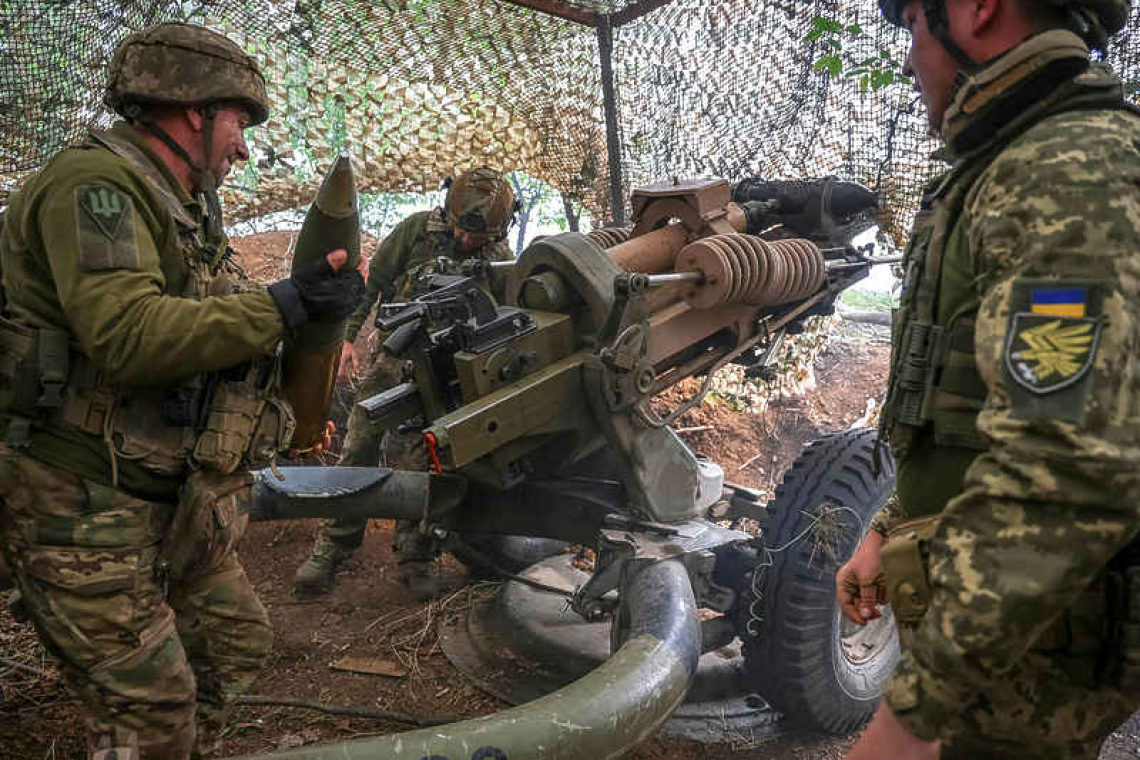KYIV/NEAR KUPIANSK, Ukraine--For the exhausted Ukrainian artillery gunners holding off Russian forces near the eastern town of Kupiansk, the U.S. aid package expected to finally pass this week is a lifeline and, potentially, a gamechanger, although that could take some time. "If they'd passed it (earlier), it would have changed the situation dramatically," said one soldier, call sign "Sailor", who said a shortage of shells had reduced their covering fire for infantrymen, costing lives and territory. After six months of congressional wrangling, the $61 billion aid package is now expected to be approved this week by the U.S. Senate and signed by President Joe Biden, replenishing Kyiv's critically low stocks of artillery shells and air defences. The influx of weapons should improve Kyiv's chances of averting a major Russian breakthrough in the east, said two military analysts, an ex-Ukrainian defence minister and a European security official. But Kyiv still faces manpower shortages on the battlefield, while questions linger over the strength of its fortifications along a sprawling, 1,000-km front line ahead of what President Volodymyr Zelenskiy said could be a Russian summer offensive. "The most important source of Ukrainian weakness is the lack of manpower," said Konrad Muzyka, director of the Rochan military consultancy in Poland. After months of debate, a law signed by Zelenskiy on April 16 to overhaul the rules governing how Ukraine mobilises civilians into the army enters force in May with the aim of making the process faster, more transparent and effective. But new draftees will require months of training before they can be deployed, which in turn creates a "window of opportunity" for Russia to exploit, Muzyka said. "I would expect the situation to probably continue to deteriorate over the next three months, but if mobilisation goes according to plan and the U.S. aid is unblocked then the situation should improve from autumn onwards," he said. The Kremlin said the U.S. aid would not alter Russia's upper hand on the front lines and would simply result in more Ukrainian deaths. Moscow has had the battlefield advantage since capturing Avdiivka, a long-time bastion town in the eastern Donbas region, in February, and its forces have been slowly advancing, using greater numbers of troops and artillery shells. They are now bearing down on the town of Chasiv Yar, located on high ground that, if captured, would bring Moscow closer to the remaining Kyiv-held Donbas cities of Kostiantynivka, Kramatorsk and Sloviansk. Zelenskiy said last week that Russia was now able to fire 10 times more artillery rounds than Ukraine's troops. Russian forces outnumber Kyiv's troops 7-10 times in the east, a Ukrainian general said this month. Andriy Yusov, Ukraine's military intelligence spokesman, said Moscow was focused on the full capture of the eastern Donetsk and Luhansk regions -- the Donbas. Russia, he added, was attacking on three fronts there - west of Avdiivka, from Kupiansk to Lyman and west of Bakhmut. In the south, it was pressing on Robotyne, the village retaken by Kyiv during last year's offensive, he said. Ukrainian positions have been pounded this year by thousands of glide bombs fired by warplanes taking advantage of Russian air superiority and dwindling Ukrainian air defences. Andriy Zagorodnyuk, a former Ukrainian defence minister, said an influx of ground-based air defences would help, while U.S.-produced F-16 fighter jets, which Kyiv expects to receive later this year, would force Russian warplanes back entirely. Replenished stocks of artillery shells should bring the gap in rounds fired down to several Russian rounds for every one Ukrainian round, he added. "We don't need to have one-to-one. Three to one would still do the job," he said, citing Kyiv's more "calculated" approach versus Russia's reliance on quantity. In addition to U.S. aid, European Union assistance includes a Czech-led initiative that will begin supplying Ukraine some 300,000 rounds of 155 mm artillery shells beginning in June. A senior European security source told Reuters that if Ukraine received the new U.S. and EU assistance, the likelihood of averting a major Russian breakthrough over the next 12 months was "quite high".







